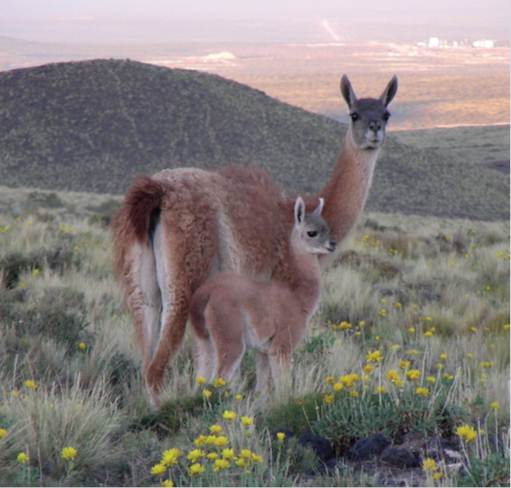South America Program 2015 |
|
| Total Number of Grants Awarded *Not including amendments to 3 existing projects |
10* |
| Total Funds Distributed Through Grants | $709,793 |
| Total Partner Contributions Leveraged by Grants | $1,176,571 |
| Total Number of Countries that Received Program Support **Not including regional projects |
7** |
South America is home to some of the most biologically rich sites in the world. The region’s landscapes host large numbers of endemic species and biodiversity threatened by habitat loss and degradation due to one of the highest land degradation and deforestation rates in the world, driven by increased demands of a growing global population for food, forest products, land minerals, and energy.
The Wildlife Without Borders – South America regional grants program provides critical support to conserve priority species, habitats and ecological processes in landscapes with high biodiversity value in South America, currently focusing on the Tropical Andes and the Southern Cone. Projects supported by the U.S. Fish and Wildlife Service (USFWS) seek to reduce threats such as unsustainable land use, human-wildlife conflict, wildlife trafficking of illegal species, and wildlife pet trade. Through strategic partnerships and strengthening in-country capacity among local institutions, decision-makers and civil society, USFWS investments seek to achieve long-lasting conservation results.
The Tropical Andes – Center of mega-diversity. Spanning from western Venezuela to northern Chile and Argentina, including large portions of Colombia, Ecuador, Peru, and Bolivia, this region contains approximately one-sixth of all plant life in less than 1 percent of the world's land area.

The Tropical Andes (shown here, in Peru) are one of the main geographic areas that USFWS investments focus on in South America. Projects in the Southern Cone, including the Gran Chaco and Patagonia, are also prioritized. Credit: Slack12 Flickerstream / CC BY-NC-ND 2.0
The Southern Cone – Landscape diversity and species endemism. Comprised of Argentina, Chile, Paraguay, and Uruguay, this region is home to a high number of unique species and landscapes found nowhere else on Earth. Of special interest to the USFWS are two eco-regions of the Southern Cone: Gran Chaco Americano and Patagonia. The Gran Chaco Americano is the largest dry forest in South America and the continent's most extensive forested region outside Amazonia. It is a vast plain extending from the Andes in the west to the Paraguay River in the east, covering parts of northern Argentina, western Paraguay and south-eastern Bolivia. Patagonia encompasses the southern end of South America, shared by Argentina and Chile. The region comprises the southern section of the Andes mountains as well as the deserts, steppes and grasslands east of the southern portion of the Andes, including the Pacific and Atlantic Ocean coasts.

The guanaco (Lama guanicoe), a species unique to South America, is the ancestor of the domestic llama. Credit: Martin Monteverde - Natalia Radovani / WCS
In 2015, the program awarded $614,938 and leveraged an additional $933,279 in matching funds toward ten projects throughout the region. Projects include: implementing an integrated biophysical and social system for conservation that links nature reserves with multifunctional landscapes through the participation of local stakeholders to address land degradation and loss of wildlife species in the southern Gran Chaco Americano. Scaling up conservation across Patagonia and resolving conflicts between wildlife and people to diminish the persecution of guanacos connected to the competition with sheep and goats for pastures, and the retaliatory killing of pumas, culpeos, Andean cats, and Andean condors due to the real or perceived threats they pose to livestock. Establishing a depredation response team (GRECO – Grupo de Respuesta al Conflicto) to address conflicts between humans and large felids in the Magdalena Medio in the tropical Andes of Colombia.




